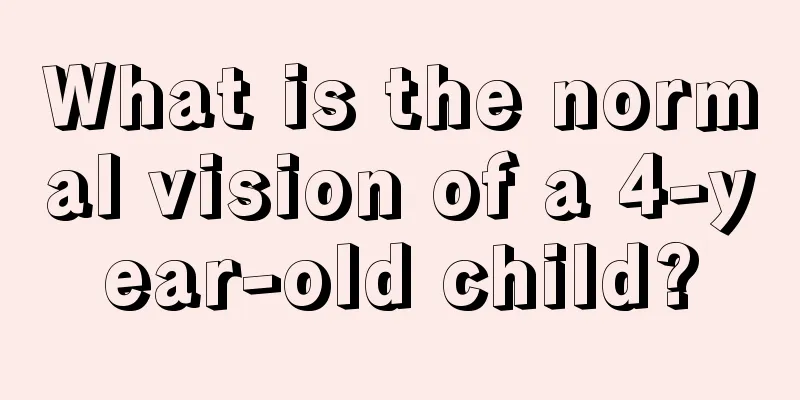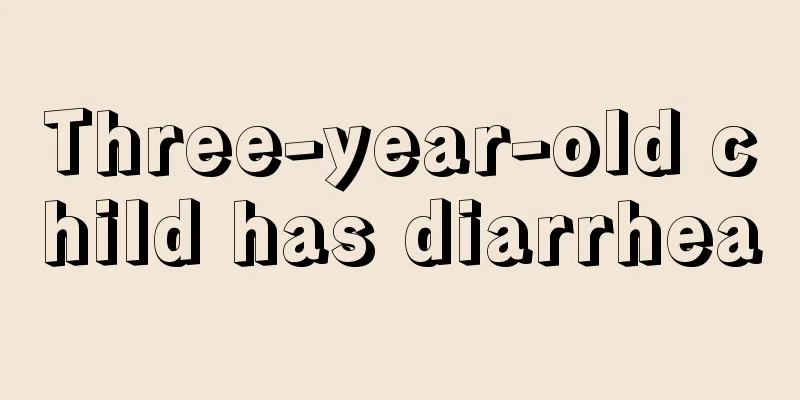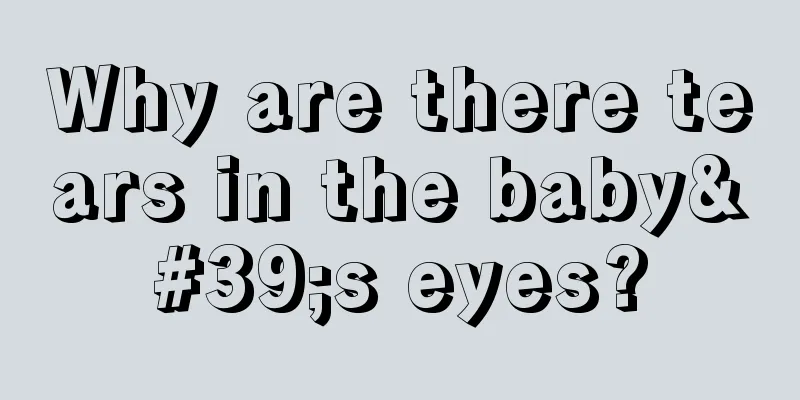What is the normal vision of a 4-year-old child?

|
The vision of a 14-year-old child is the same as that of an adult, which is generally above 0.6. If the vision of a 14-year-old child is lower than 0.6, it means that symptoms of myopia may occur, so mothers are advised to pay attention to protecting their children's vision. The eyesight of a 14-year-old child is easily affected by electronic devices. Children should not be allowed to play games in front of the TV or mobile phones for a long time, and they should be given more foods that can improve eyesight. The standard visual acuity for children is: 6 months to 2 years old: accurate and smooth eye tracking movements; 3~4 years old, visual acuity>0.4, the visual acuity difference between the two eyes is less than two lines; 4~5 years old, visual acuity ≥ 0.6, and the visual acuity difference between the two eyes is less than two lines; 5~6 years old, visual acuity ≥ 0.8, and the visual acuity difference between the two eyes is less than two lines; Aged 7 years and above, visual acuity above 1.0, and visual acuity difference between both eyes less than two lines. It is normal for a 4-year-old child to have a visual acuity ≥ 0.6 and a visual acuity difference of less than two lines between the two eyes. Experts recommend: If it is lower than 0.6, there may be delayed visual development or myopia. It is best to give your child oral Lejing Vision Nutrients in time, two packets a day, and correct your child’s bad eye habits. If you persist for a period of time, your child’s vision will gradually improve. How to check the vision of babies of different ages To preliminarily identify whether there is a problem with the baby's vision, mothers are recommended a simple method: when you cover one of the baby's eyes with your hand, the baby laughs happily or struggles in resistance, but there is no such reaction when you cover the other eye, it means that there is a problem with the vision of this eye, and the baby should be taken to see an ophthalmologist. Newborns: pupillary response to light Hold a flashlight, cover one of your baby's eyes first, and then shine the flashlight into the other uncovered eye. If the pupil shrinks immediately after being exposed to light, it is a normal visual reaction. Test the other eye in the same way. If the pupil cannot shrink with light, it is abnormal. 2-month-old baby: fixation reaction and blink reaction Put the bottle or toy in front of the baby. If the baby blinks the moment he sees the object in front of him, it is a normal visual reaction, that is, the blink reaction. Then the baby's eyes will stare at the object in front of him for a certain period of time, which is the so-called fixation reaction. When the baby is older, his eyes will be able to move as the object he is staring at moves. 3-4 month old baby: visual movement oscillation phenomenon Place a cylinder with black and white stripes in front of the baby's eyes, move and rotate the cylinder horizontally at the same time, and observe whether the baby's eyeballs follow the cylinder to move left and right. If the eyeballs move along, it is a normal visual response. Babies under 2 years old: objective observation method Using objective observation method within 2 years old, babies can grasp nearby objects at 6 months old; follow the baby's gaze at 8 months old (the baby looks at where the adult points his finger and keeps his eyes fixed); point to the nostrils accurately at 1 year old; and avoid objects when walking at 2 years old. In addition, if babies aged 4-7 months have vision problems, their crawling and playing with toys are usually slower and less accurate than other babies of the same age, and they appear a little clumsy. 3-5 years old: hand gesture and animal image examination method Babies aged 3-5 years old can be checked using hand-type and animal-type image eye charts. It should be noted that you should patiently teach your baby to recognize the eye chart at home as early as possible and test the baby repeatedly, otherwise it will affect the accuracy of the results. Ages 5 and above: Adult vision test Babies over 5 years old can be checked using the adult vision chart. If they cooperate well, their vision can be measured. The normal vision of children of different age groups in my country is: 2 years old: 0.4-0.5, 3 years old: 0.5-0.6, 4 years old: 0.7-0.8, 5 years old: 0.8-1.0, 6 years old: 1.0 or above. Warm reminder: If you find that your baby has vision problems after testing using the above method, it is best for parents to take the baby to the hospital for examination and treatment in time. |
<<: Are children's vision correctors useful?
>>: What is normal vision for a second grader?
Recommend
Treatment for baby's fever and swollen gums
As parents, when our children have a fever and th...
What to do if your baby has a viral fever and diarrhea
A baby's viral fever will have many impacts o...
What should children supplement in spring?
No one likes winter. The long winter is finally o...
When do children lose their teeth?
Children's menstrual cycles and some precauti...
Which eye drops are good for 3-year-old children?
As babies grow older, they often develop some dis...
What should I do if my child has a fever during the day?
It is not so rare for children to have a fever. I...
How many days does the baby take anti-inflammatory medicine for a red throat?
Babies with red throats usually need to take oral...
What to do if children have tooth decay
What should be done if children have tooth decay ...
There are white spots in the child's throat
Children's resistance is relatively low, whic...
Is it good for children to eat almonds?
Almonds for children should be treated differentl...
What to do with a three-year-old child's X-shaped legs
Children must pay close attention to their leg sh...
Why is my 7 month old baby retching?
Sometimes we may feel suddenly nauseous, and if w...
Why does my 20-day-old baby not sleep?
Why doesn’t a 20-day-old baby sleep? A 20-day-old...
Why do babies have black lips?
Whether the baby can grow up healthily is what pa...
Causes of gastroenteritis in children
We know that children's organs are not fully ...









